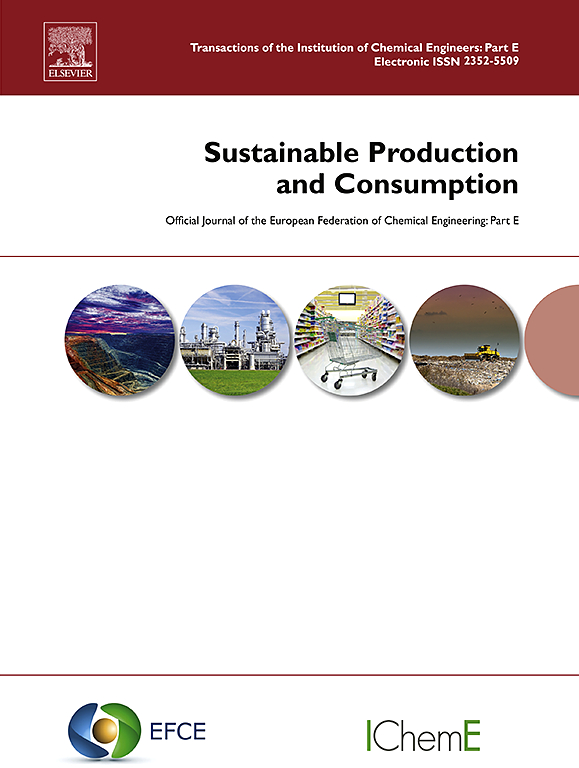日本木屋和人工林木材与碳储量的关联动态模型
IF 9.6
1区 环境科学与生态学
Q1 ENVIRONMENTAL STUDIES
引用次数: 0
摘要
树木生长过程中的碳吸收是实现碳中和社会的重要因素,而碳储量的长期储存则是可持续发展面临的关键挑战。以往的研究主要集中在人工林中的活生物量碳储量或人造物体中的人为碳储量。要全面解决基于自然的气候问题,就需要一个分析框架、数据集和情景设置来模拟木材供需之间的相互关系。本研究开发了一个相互关联的材料流分析模型,在该模型中,木制房屋的木材需求与来自人工林管理的木材供应相关联。我们通过量化日本的活生物量和人为碳储量及其潜力来演示该模型。我们比较了该模型的多个情景运行,这些情景是通过不同的房屋类型、结构和寿命组合的人口变化估算出的木屋需求量。结果表明,在木制独立式房屋需求量大且寿命延长的情景下,到 2050 年碳储量将达到 11 亿吨碳当量的最大值。另一方面,我们还发现,由于对木材的需求有限,人工林的老化及其碳储存能力的降低在任何情景下都是不可避免的。值得注意的是,尽管各种情景的设定大相径庭,但我们的研究结果表明,日本未来潜在碳储存量的差异很小。这可以用日本独特的人口特征和建筑人口统计学来解释。这些与直觉相反的发现凸显了对林业和建筑业进行相互关联建模的必要性。我们的模型及其范围具有多样性,适用于其他案例研究地区、估算期和目标材料。本文章由计算机程序翻译,如有差异,请以英文原文为准。
An interlinked dynamic model of timber and carbon stocks in Japan's wooden houses and plantation forests
Carbon absorption in growing trees is an important element of a carbon-neutral society, and the long-term storage of carbon stocks is a crucial sustainability challenge. Previous studies have focused on either live-biomass carbon stocks in plantation forests or anthropogenic carbon stocks in man-made objects. For a comprehensive nature-based climate solution, an analytical framework, dataset, and scenario setup for modeling the interrelationship between timber supply and demand are required. This study developed an interlinked material flow analysis model in which the timber demand for wooden houses is connected with timber supply from managed plantation forestry. We demonstrate the model by quantifying both live-biomass and anthropogenic carbon stocks and their potentials in Japan. We compared multiple scenario-runs of the model for wooden house demands estimated by population change with varying combinations of house types, structures, and lifespans. Our results show that carbon stocks will reach a maximum amount of 1.1 billion t-C by 2050 in a scenario of high demand for wooden detached houses with lifespan extensions. On the other hand, we also found that the aging of plantation forests and their reduced carbon-stocking capacities appear inevitable in any scenario owing to the limited demand for timber. Notably, despite the widely different settings of the various scenarios, our results exhibited narrow variances in future potential carbon storage in Japan. This can be explained by the unique population characteristics and building demographics of Japan. These counterintuitive findings highlight the need for interrelated modeling of the forestry and construction sectors. Our model and its scope are versatile and applicable to other case study areas, estimation periods, and target materials.
求助全文
通过发布文献求助,成功后即可免费获取论文全文。
去求助
来源期刊

Sustainable Production and Consumption
Environmental Science-Environmental Engineering
CiteScore
17.40
自引率
7.40%
发文量
389
审稿时长
13 days
期刊介绍:
Sustainable production and consumption refers to the production and utilization of goods and services in a way that benefits society, is economically viable, and has minimal environmental impact throughout its entire lifespan. Our journal is dedicated to publishing top-notch interdisciplinary research and practical studies in this emerging field. We take a distinctive approach by examining the interplay between technology, consumption patterns, and policy to identify sustainable solutions for both production and consumption systems.
 求助内容:
求助内容: 应助结果提醒方式:
应助结果提醒方式:


